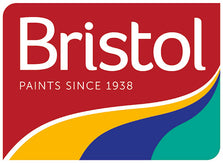
Brush, Roller, or Sprayer: Choosing the Right Paint Tool for Your Project
The choice between using a roller, spray, or paintbrush depends on the specific project, the finish you want to achieve, and your comfort level with each tool. Here's a breakdown to help you decide:
-
Paintbrush:
- When to Use: For smaller, detailed, or intricate areas. Commonly used for cutting in, trim, moldings, window frames, doors, and smaller pieces of furniture.
- Advantages: Offers precision and control, especially for detailed work.
- Disadvantages: Can leave brush strokes if not used correctly; slower than rollers or sprayers for large areas.
-
Roller:
- When to Use: For larger, flat surfaces like walls, ceilings, and floors. Rollers come in various nap lengths, with longer naps used for more textured surfaces.
- Advantages: Faster application than a brush; provides a reasonably smooth finish with minimal effort.
- Disadvantages: Not suitable for detailed work; can be messy; may not achieve the super smooth finishes that sprayers can.
-
Spray:
- When to Use: Large surfaces or intricate objects where a brush or roller wouldn't be efficient. Often used for exterior painting, cabinets, furniture, and other items that benefit from a very smooth finish.
- Advantages: Fastest method for covering large areas; capable of extremely smooth finishes; can efficiently cover intricate objects or surfaces.
- Disadvantages: Requires masking off areas you don't want to be painted; overspray can be a concern; equipment can be expensive and requires cleaning and maintenance; there's a learning curve to achieve even coverage without drips or runs; some paints may require thinning.
General Considerations:
-
Size and Detail of the Project: For small projects or projects requiring detail work, a brush is often the best choice. For medium-sized areas like walls, a roller is often ideal. Sprayers excel for large areas or projects where a very smooth finish is desired.
-
Skill Level: Spraying requires a bit more skill and preparation than brushing or rolling. There's a learning curve to prevent drips, runs, or uneven coverage.
-
Clean-Up and Maintenance: Brushes and rollers require cleaning after use. Sprayers require more extensive cleaning and maintenance to keep them in good working order.
-
Cost: Brushes and rollers are typically less expensive than sprayers. However, sprayers can save time (and time is money) on very large jobs.
-
Finish Quality: While brushes and rollers can achieve excellent results with skill, sprayers can offer an exceptionally smooth finish, especially on cabinets and furniture.
-
Safety: When using a sprayer, especially indoors, it's essential to ensure proper ventilation and use a respirator suitable for paint fumes.
In summary, the choice of tool often comes down to the specifics of the job and your personal preferences. All three tools – brush, roller, and sprayer – have their own strengths and ideal applications.
